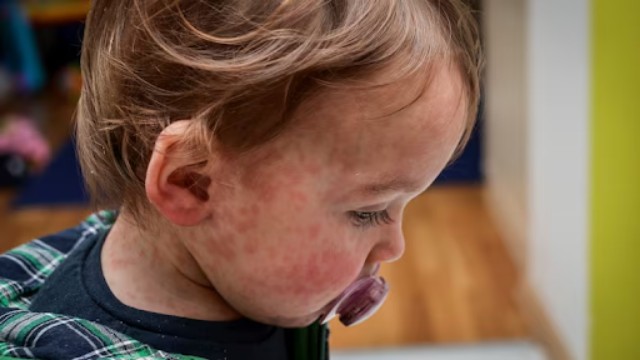
A letter sent to the New England Journal of Medicine and signed by Canadian health officials details the human case of H5N1 in Canada and says the 13-year-old girl who was admitted to the pediatric intensive care unit at British Columbia Children's Hospital in November last year is no longer considered infectious. (Justine Boulin/CBC)
A 13-year-old girl from British Columbia, who was the first reported human case of H5N1 avian flu in Canada, is now off supplemental oxygen and no longer infectious, according to a letter published in The New England Journal of Medicine. Signed by Canadian health officials, the letter provides a detailed timeline of the teen's case and highlights ongoing concerns about the virus.
The teenager first visited a B.C. emergency room on November 4 with a fever and eye inflammation (conjunctivitis). Initially discharged without treatment, her condition worsened, leading to symptoms including a persistent cough, vomiting, and diarrhea. She returned to the hospital on November 7 in respiratory distress and was transferred to the pediatric intensive care unit at B.C. Children’s Hospital the following day. There, she received critical care, including temporary tracheal intubation.
This colourized electron microscope image provided by the U.S. National Institute of Allergy and Infectious Diseases in 2024 shows the red and yellow particles of avian influenza A virus, or bird flu, grown in cultured cells. (CDC/NIAID/The Associated Press)
As of November 29, the patient was deemed no longer infectious, and by December 18, she no longer required supplemental oxygen. Both the girl and her family consented to the release of details about her case, though the source of her exposure to the virus remains unclear. Investigations have ruled out secondary transmission within her household or the hospital.
No Direct Link to Poultry Farms
The investigation included testing nearby pets, birds, and environmental samples. It concluded that the strain of H5N1 contracted by the teenager closely matched strains found in wild birds in the Fraser Valley in October. This strain was not directly linked to outbreaks at local poultry farms.
B.C.'s Fraser Health region, where the teen resides, has faced repeated avian flu outbreaks in recent years. According to the Canadian Food Inspection Agency, over 8.5 million birds in the province have been affected since the spring of 2022. The Fraser Valley, in particular, has been a hotspot for these outbreaks.
A Dangerous Virus
The letter emphasized the severity of the H5N1 virus, which can cause critical illness in humans. “Evidence for changes to [protein structures] that may increase binding to human airway receptors is worrisome,” the letter stated.
Dr. Isaac Bogoch, an infectious disease expert at Toronto General Hospital, noted that the girl’s symptoms align with those seen in other human cases of avian flu reported globally over the past two decades. “This is a terrible virus,” he said, describing the severity of the infection and the intense immune response it triggers.
Dr. Maria Van Kerkhove, the World Health Organization's director of epidemic and pandemic preparedness, is calling for increased surveillance globally of animal populations that are known to be susceptible to H5N1, including wild birds, poultry, swine, and cattle.
While the virus is not yet easily transmissible between humans, Dr. Bogoch cautioned against complacency. “We must minimize opportunities for this virus to mutate by reducing its spread among mammals,” he urged.
The case serves as a stark reminder of the potential risks associated with avian flu, underscoring the importance of ongoing vigilance and precautionary measures to prevent further spread.















